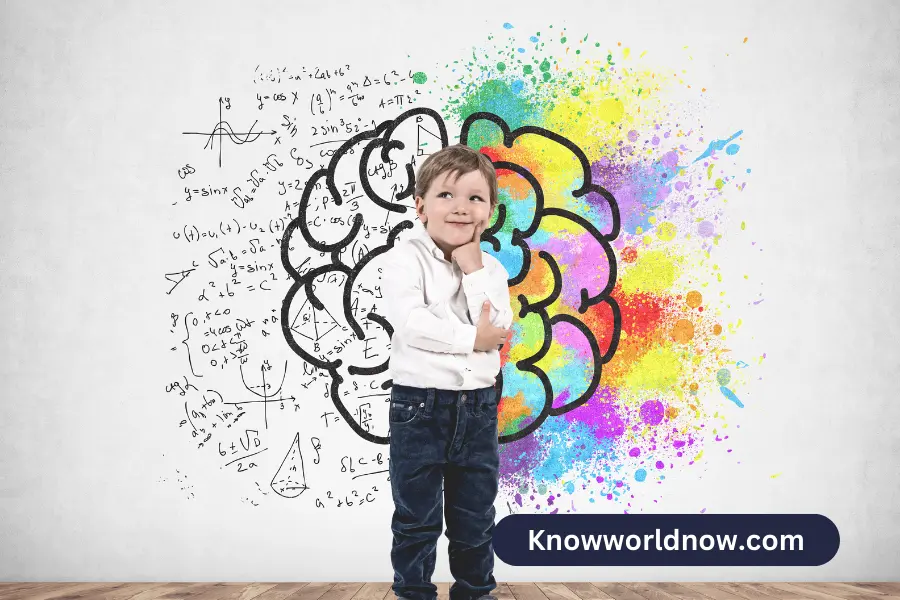As adolescents transition from childhood to adulthood, their brains undergo significant changes that can impact their mental health. Understanding the teenage brain and how it develops can be a key factor in promoting improved mental health outcomes for teenagers.
We have contacted an Idaho Falls mental health expert team to learn how we can help teens overcome the issues caused for the transition from teens to adults.
The teenage brain is still developing, with the prefrontal cortex – the part of the brain responsible for decision-making, impulse control, and planning – fully formed in the mid-20s.
During adolescence, the brain undergoes pruning, eliminating neural connections that are not frequently used. This process helps to streamline the brain’s functions and make it more efficient.
However, it also means that behaviors and thought patterns that are frequently repeated during this time can become ingrained and more difficult to change later in life.
This pruning process is particularly relevant to mental health because it means that during adolescence, the brain is particularly sensitive to experiences and environmental factors.
Positive experiences can help to reinforce healthy behaviors and thought patterns, while negative experiences can have long-lasting effects on mental health.
One of the most significant changes that occur in the teenage brain is an increase in dopamine activity. Dopamine is a neurotransmitter that is associated with feelings of pleasure and reward.
This increase in dopamine activity can make teenagers more susceptible to risky behaviors, such as drug use, alcohol consumption, and unsafe sex.
It can also make them more sensitive to social rewards, such as peer approval, which can contribute to the development of social anxiety and depression.
Another significant change in the teenage brain is increased activity in the limbic system – the part of the brain responsible for emotions and memory. This can make teenagers more prone to emotional highs and lows and more sensitive to stress and anxiety.
Understanding these changes in the teenage brain is critical for promoting improved mental health outcomes for teenagers. By providing teenagers with positive experiences, such as opportunities for social connection, healthy physical activity, and positive reinforcement for healthy behaviors, we can help to reinforce positive neural pathways in the brain.
On the other hand, by reducing exposure to negative experiences, such as bullying, trauma, and social isolation, we can help to prevent the development of negative thought patterns and behaviors that can have long-lasting effects on mental health.
Another important factor in understanding the teenage brain and promoting improved mental health is recognizing adolescents’ unique challenges.
Adolescence is a time of significant physical and emotional transition, and teenagers are often faced with a wide range of stressors, from academic pressure to peer relationships and family conflict.
It is essential to provide teenagers with resources and support to help them navigate these challenges, whether through access to mental health services, supportive family relationships, or opportunities for positive social connections.
Additionally, it is important to recognize that the teenage brain is not monolithic – every teenager is unique and may face different challenges and experiences that impact their mental health.
Some teenagers may be more susceptible to substance use or depression, while others struggle with anxiety or trauma.
By taking a personalized approach to mental health support for teenagers, we can help identify and address the specific challenges that each teenager faces and provide them with targeted support that meets their unique needs.
Understanding the teenage brain and its development is critical in promoting improved mental health outcomes for teenagers.
By recognizing the unique challenges that adolescents face and providing them with positive experiences, support, and targeted interventions, we can help to prevent the development of negative thought patterns and behaviors and promote healthy brain development.
With a focus on prevention, early intervention, and personalized support, we can ensure that every teenager has the resources and support they need to thrive.
As our understanding of the teenage brain continues to evolve, it becomes increasingly evident that a comprehensive approach to promoting improved mental health among teenagers is essential.
While the information in the previous article highlights the key changes and challenges associated with the teenage brain, additional insights and strategies can further contribute to positive mental health outcomes for this vulnerable population.
One crucial aspect to consider is the influence of hormones on the teenage brain and mental health. During adolescence, there is a surge in hormones, including estrogen and testosterone, which can affect mood, emotions, and behavior.
These hormonal fluctuations can contribute to mood swings, irritability, and increased vulnerability to mental health disorders such as depression and anxiety.
Recognizing the role of hormones in shaping the teenage brain can help healthcare professionals and caregivers develop targeted interventions and support systems that address these unique challenges.
Furthermore, it is crucial to emphasize the importance of promoting resilience and coping skills among teenagers. The teenage brain is highly adaptable and capable of change, making adolescence an opportune time to develop and strengthen resilience.
By providing teenagers with the necessary tools to navigate stress, setbacks, and challenges, we can empower them to overcome adversity and promote positive mental health outcomes.
Teaching coping strategies and problem-solving skills and fostering a growth mindset can equip teenagers with the resilience to face life’s inevitable ups and downs.
In addition to individual-level interventions, creating supportive environments that prioritize mental health and well-being is vital. Schools, families, and communities play a critical role in shaping the experiences and opportunities available to teenagers.
Implementing comprehensive mental health programs in schools, fostering open and supportive family dynamics, and promoting community engagement can all contribute to a positive and nurturing environment for teenagers.
By addressing systemic factors and creating a culture that values mental health, we can mitigate the negative impact of external stressors on the developing teenage brain.
Moreover, integrating technology and digital resources can offer new avenues for supporting teenage mental health.
With the prevalence of smartphones and digital platforms, there is an opportunity to leverage these tools to provide accessible mental health resources, online support communities, and self-help applications tailored to teenagers.
By harnessing technology responsibly and informedly, we can bridge the gap between mental health services and the digital generation, ensuring that support is readily available and destigmatized.
In conclusion, understanding the complexities of the teenage brain is crucial for promoting improved mental health outcomes among teenagers.
By acknowledging the role of hormones, fostering resilience and coping skills, creating supportive environments, and harnessing the potential of technology, we can enhance our approach to supporting teenage mental health.
By taking a holistic and personalized approach that considers each teenager’s unique needs and challenges, we can empower them to navigate this critical stage of development with resilience, strength, and well-being.
With continued research, collaboration, and a commitment to prioritizing teenage mental health, we can create a future where every teenager thrives and realizes their full potential.







